Fabio Zanasi
University College London
Logic Explanation of AI Classifiers by Categorical Explaining Functors
Mar 20, 2025Abstract:The most common methods in explainable artificial intelligence are post-hoc techniques which identify the most relevant features used by pretrained opaque models. Some of the most advanced post hoc methods can generate explanations that account for the mutual interactions of input features in the form of logic rules. However, these methods frequently fail to guarantee the consistency of the extracted explanations with the model's underlying reasoning. To bridge this gap, we propose a theoretically grounded approach to ensure coherence and fidelity of the extracted explanations, moving beyond the limitations of current heuristic-based approaches. To this end, drawing from category theory, we introduce an explaining functor which structurally preserves logical entailment between the explanation and the opaque model's reasoning. As a proof of concept, we validate the proposed theoretical constructions on a synthetic benchmark verifying how the proposed approach significantly mitigates the generation of contradictory or unfaithful explanations.
An Algebraic Approach to Moralisation and Triangulation of Probabilistic Graphical Models
Mar 14, 2025Abstract:Moralisation and Triangulation are transformations allowing to switch between different ways of factoring a probability distribution into a graphical model. Moralisation allows to view a Bayesian network (a directed model) as a Markov network (an undirected model), whereas triangulation works in the opposite direction. We present a categorical framework where these transformations are modelled as functors between a category of Bayesian networks and one of Markov networks. The two kinds of network (the objects of these categories) are themselves represented as functors, from a `syntax' domain to a `semantics' codomain. Notably, moralisation and triangulation are definable inductively on such syntax, and operate as a form of functor pre-composition. This approach introduces a modular, algebraic perspective in the theory of probabilistic graphical models.
Learning Closed Signal Flow Graphs
Jun 28, 2024Abstract:We develop a learning algorithm for closed signal flow graphs - a graphical model of signal transducers. The algorithm relies on the correspondence between closed signal flow graphs and weighted finite automata on a singleton alphabet. We demonstrate that this procedure results in a genuine reduction of complexity: our algorithm fares better than existing learning algorithms for weighted automata restricted to the case of a singleton alphabet.
Deep Learning with Parametric Lenses
Mar 30, 2024Abstract:We propose a categorical semantics for machine learning algorithms in terms of lenses, parametric maps, and reverse derivative categories. This foundation provides a powerful explanatory and unifying framework: it encompasses a variety of gradient descent algorithms such as ADAM, AdaGrad, and Nesterov momentum, as well as a variety of loss functions such as MSE and Softmax cross-entropy, and different architectures, shedding new light on their similarities and differences. Furthermore, our approach to learning has examples generalising beyond the familiar continuous domains (modelled in categories of smooth maps) and can be realised in the discrete setting of Boolean and polynomial circuits. We demonstrate the practical significance of our framework with an implementation in Python.
Categories of Differentiable Polynomial Circuits for Machine Learning
Mar 12, 2022Abstract:Reverse derivative categories (RDCs) have recently been shown to be a suitable semantic framework for studying machine learning algorithms. Whereas emphasis has been put on training methodologies, less attention has been devoted to particular \emph{model classes}: the concrete categories whose morphisms represent machine learning models. In this paper we study presentations by generators and equations of classes of RDCs. In particular, we propose \emph{polynomial circuits} as a suitable machine learning model. We give an axiomatisation for these circuits and prove a functional completeness result. Finally, we discuss the use of polynomial circuits over specific semirings to perform machine learning with discrete values.
Functorial String Diagrams for Reverse-Mode Automatic Differentiation
Jul 28, 2021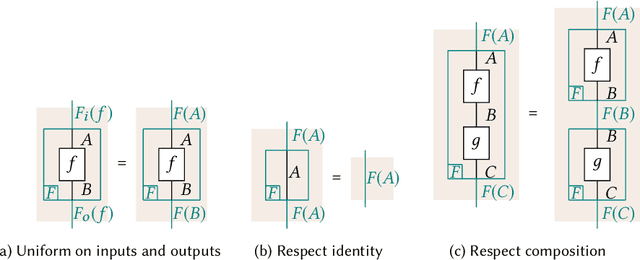
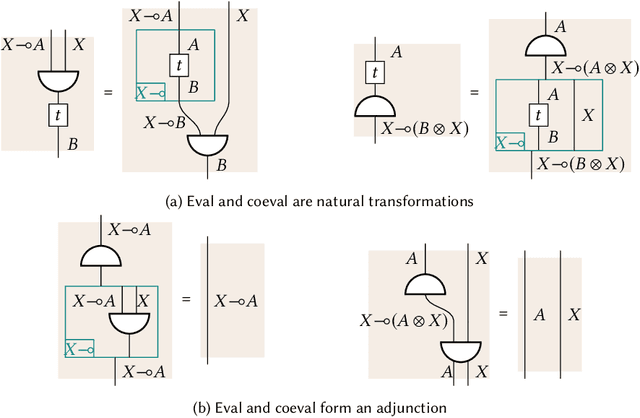

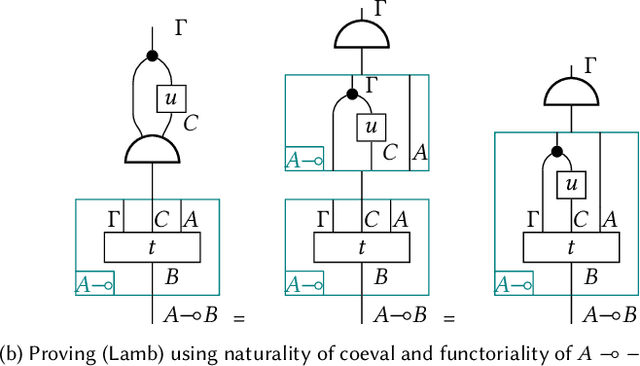
Abstract:We enhance the calculus of string diagrams for monoidal categories with hierarchical features in order to capture closed monoidal (and cartesian closed) structure. Using this new syntax we formulate an automatic differentiation algorithm for (applied) simply typed lambda calculus in the style of [Pearlmutter and Siskind 2008] and we prove for the first time its soundness. To give an efficient yet principled implementation of the AD algorithm we define a sound and complete representation of hierarchical string diagrams as a class of hierarchical hypergraphs we call hypernets.
Categorical Foundations of Gradient-Based Learning
Mar 02, 2021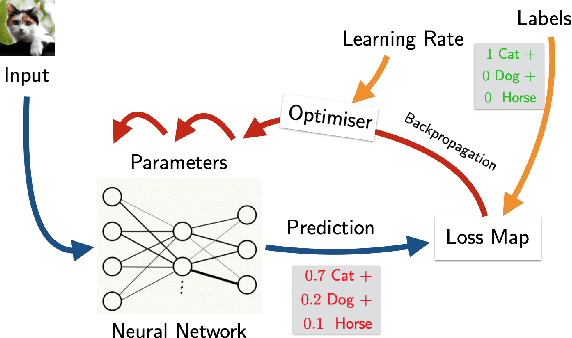
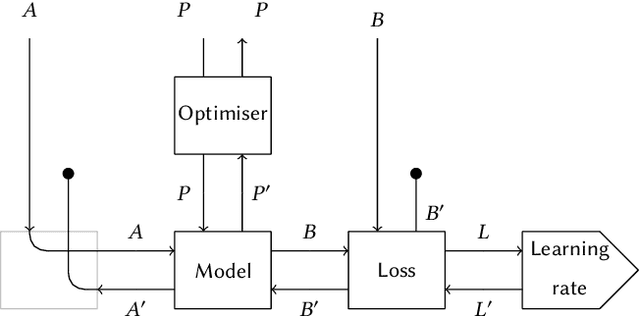

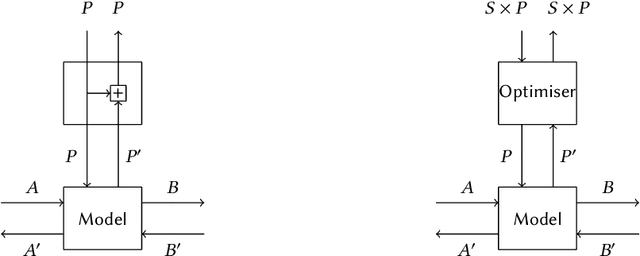
Abstract:We propose a categorical foundation of gradient-based machine learning algorithms in terms of lenses, parametrised maps, and reverse derivative categories. This foundation provides a powerful explanatory and unifying framework: it encompasses a variety of gradient descent algorithms such as ADAM, AdaGrad, and Nesterov momentum, as well as a variety of loss functions such as as MSE and Softmax cross-entropy, shedding new light on their similarities and differences. Our approach also generalises beyond neural networks (modelled in categories of smooth maps), accounting for other structures relevant to gradient-based learning such as boolean circuits. Finally, we also develop a novel implementation of gradient-based learning in Python, informed by the principles introduced by our framework.
Reverse Derivative Ascent: A Categorical Approach to Learning Boolean Circuits
Jan 26, 2021
Abstract:We introduce Reverse Derivative Ascent: a categorical analogue of gradient based methods for machine learning. Our algorithm is defined at the level of so-called reverse differential categories. It can be used to learn the parameters of models which are expressed as morphisms of such categories. Our motivating example is boolean circuits: we show how our algorithm can be applied to such circuits by using the theory of reverse differential categories. Note our methodology allows us to learn the parameters of boolean circuits directly, in contrast to existing binarised neural network approaches. Moreover, we demonstrate its empirical value by giving experimental results on benchmark machine learning datasets.
* In Proceedings ACT 2020, arXiv:2101.07888
Causal Inference by String Diagram Surgery
Nov 20, 2018Abstract:Extracting causal relationships from observed correlations is a growing area in probabilistic reasoning, originating with the seminal work of Pearl and others from the early 1990s. This paper develops a new, categorically oriented view based on a clear distinction between syntax (string diagrams) and semantics (stochastic matrices), connected via interpretations as structure-preserving functors. A key notion in the identification of causal effects is that of an intervention, whereby a variable is forcefully set to a particular value independent of any prior propensities. We represent the effect of such an intervention as an endofunctor which performs `string diagram surgery' within the syntactic category of string diagrams. This diagram surgery in turn yields a new, interventional distribution via the interpretation functor. While in general there is no way to compute interventional distributions purely from observed data, we show that this is possible in certain special cases using a calculational tool called comb disintegration. We demonstrate the use of this technique on a well-known toy example, where we predict the causal effect of smoking on cancer in the presence of a confounding common cause. After developing this specific example, we show this technique provides simple sufficient conditions for computing interventions which apply to a wide variety of situations considered in the causal inference literature.
The Logical Essentials of Bayesian Reasoning
Apr 27, 2018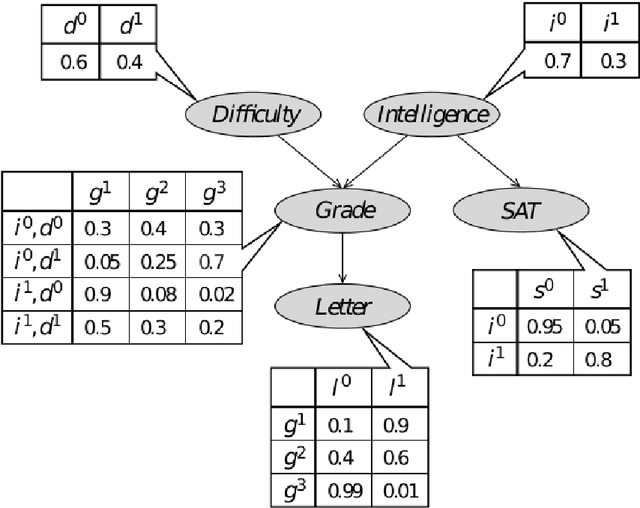
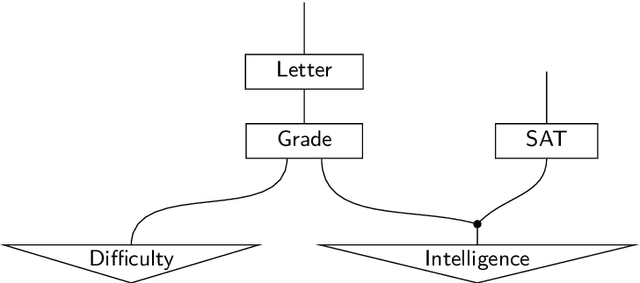

Abstract:This chapter offers an accessible introduction to the channel-based approach to Bayesian probability theory. This framework rests on algebraic and logical foundations, inspired by the methodologies of programming language semantics. It offers a uniform, structured and expressive language for describing Bayesian phenomena in terms of familiar programming concepts, like channel, predicate transformation and state transformation. The introduction also covers inference in Bayesian networks, which will be modelled by a suitable calculus of string diagrams.
 Add to Chrome
Add to Chrome Add to Firefox
Add to Firefox Add to Edge
Add to Edge